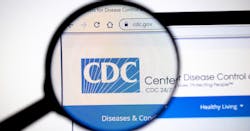It may have been a long time coming, but the Centers for Disease Control and Prevention (CDC) recently released revisions to its COVID-19 quarantine recommendations that finally loosen its restrictions while at the same time the agency chose to acknowledge that “COVID-19 is here to stay.”
This acknowledgement by the agency “seemed to shift its focus from viral containment to lessening the risk of severe illness and death associated with the virus,” state attorneys Corbin Carter and Michael S. Arnold of the Mintz law firm.
Chief among these changes, they note, is the CDC’s removal of its quarantine recommendation—individuals are no longer advised that they should quarantine following close contact exposure to COVID-19, regardless of their vaccination status, where they do not experience symptoms or test positive for the disease.
The centers’ revised prevention recommendations stress these points:
• Instead of quarantining, individuals exposed to COVID-19 should wear a high-quality mask for 10 days and get tested on Day 5.
• The isolation-related recommendations for individuals who test positive or have COVID symptoms largely remain the same. Regardless of vaccination status, individuals should isolate from others when they test positive (for at least five days based upon individual risk category) and should wear a high-quality mask for at least 10 days. Also, if an employee has symptoms, they should get tested and isolate while they are waiting for their test results. If test results are negative, isolation can end.
• The CDC made clear that individuals who are immunocompromised or had a moderate or severe COVID illness (evidenced by difficulty breathing or hospitalization) should isolate for 10 days or potentially even longer, based on the advice they receive from healthcare providers.
• The CDC also clarified that after an individual ends isolation, if the COVID symptoms worsen or reappear, the individual should restart the isolation period.
• Screening performed via testing of asymptomatic people without known exposures will no longer be recommended in most community settings, including all non-healthcare workplaces.
(On the other hand, separate recommendations continue to apply to healthcare professionals.)
Carter and Arnold contend that employers should consider the effect the CDC’s revised recommendations may have regarding their operations on several fronts. “Most immediately, employers should consider whether to revisit the quarantine and isolation policies that they have put into place (and revised, and revised anew) throughout the pandemic.”
To update company policies, employers may wish to remove quarantine periods for workers with close contact exposure but no symptoms. Employers can still choose to require individuals with exposure concerns to test for the virus.
Employers also should take into account that the EEOC recently revised its own pandemic-related guidance. This document emphasizes that employers administering viral testing as a mandatory screening measure should show that such testing is job related and consistent with business necessity, the attorneys point out.
They added, “Given the CDC’s declaration that viral screening of asymptomatic people without known exposure is no longer recommended, employers should continue to carefully analyze whether administering wide-scale, indiscriminate testing should be a condition for workplace entry.”
Carter and Arnold also urge employers to be on the lookout in the coming weeks for state and local health departments choosing to adopt the same revised CDC recommendations. As a result, employers in states with COVID-related leave laws—such as New York’s COVID-19 Quarantine Leave Law—may see the requirements applying to leave benefits shift as well.
“For instance, where an order of quarantine is no longer applicable, New York employees without the ability to telework may have less access to COVID-19 Quarantine Leave than they did previously,” they explain, but that of course depends on when and whether New York chooses to follow the CDC example.
The attorneys also suggest that some states and local jurisdictions—such as California with its own Cal/OSHA COVID standards—may continue to have stricter requirements that trump any evolving public health recommendations or guidance. “Employers should remain aware of any shifting requirements regarding quarantine, isolation, worker removal, testing and vaccination based upon state and local requirements,” they warn.
About the Author

David Sparkman
David Sparkman is founding editor of ACWI Advance, the newsletter of the American Chain of Warehouses Inc. He also heads David Sparkman Consulting, a Washington, D.C. area public relations and communications firm. Prior to these he was director of industry relations for the International Warehouse Logistics Association. Sparkman has also been a freelance writer, specializing in logistics and freight transportation. He has served as vice president of communications for the American Moving and Storage Association, director of communications for the National Private Truck Council, and for two decades with American Trucking Associations on its weekly newspaper, Transport Topics.
